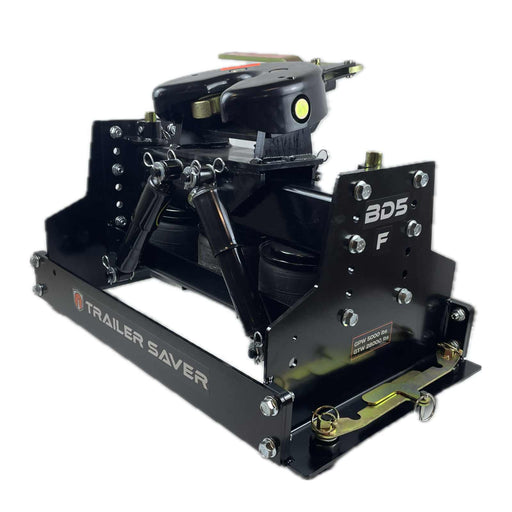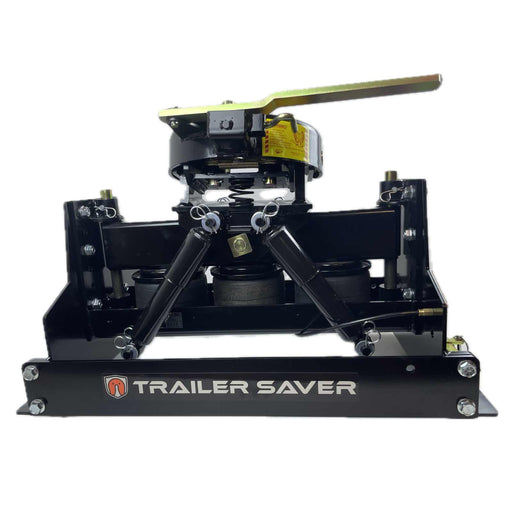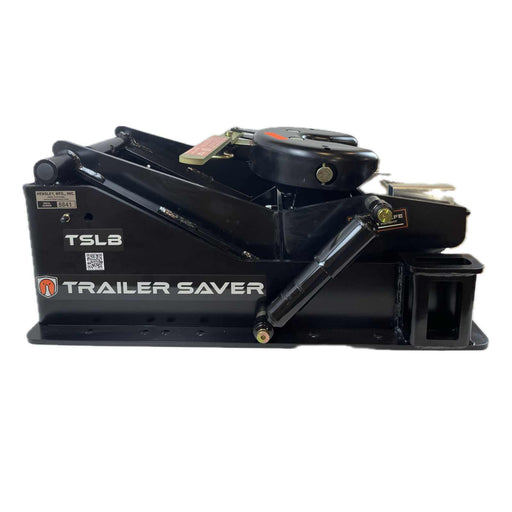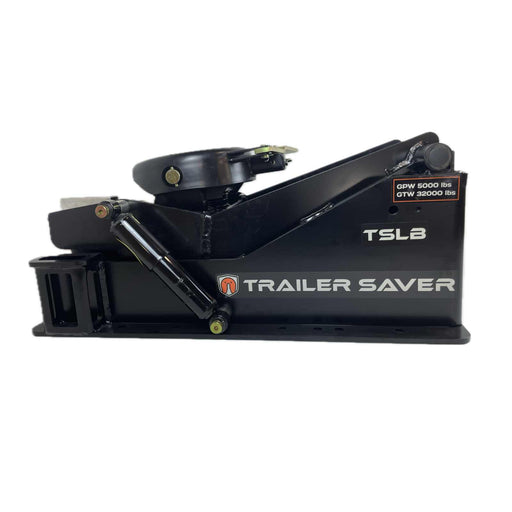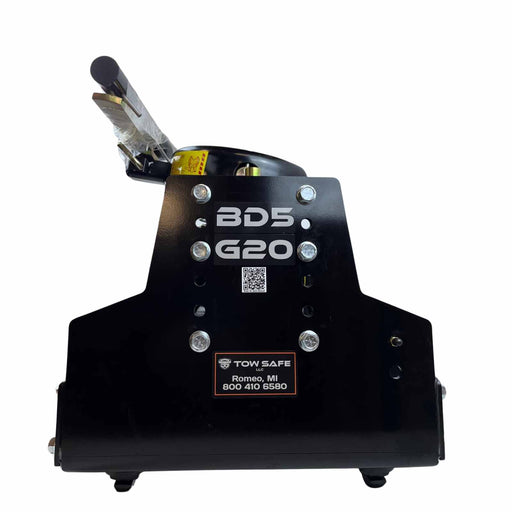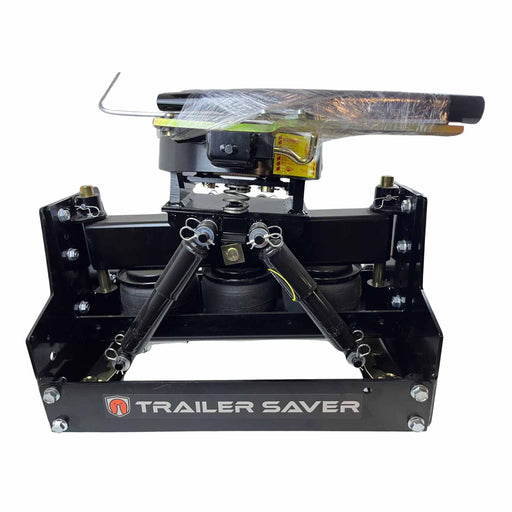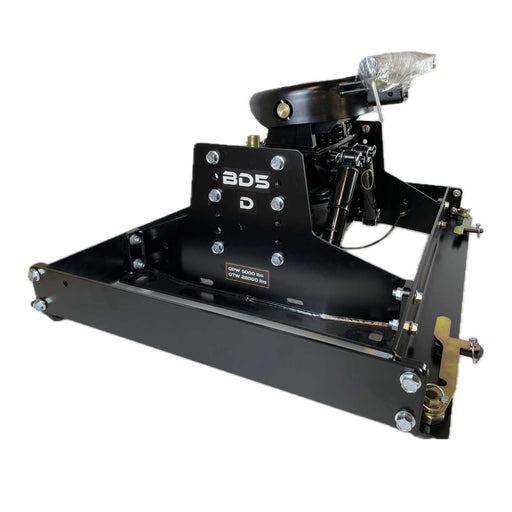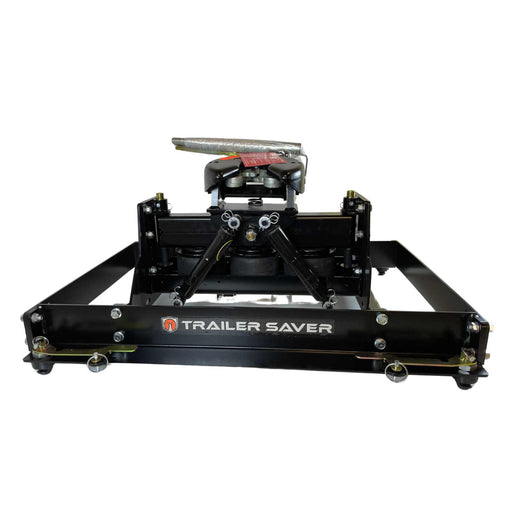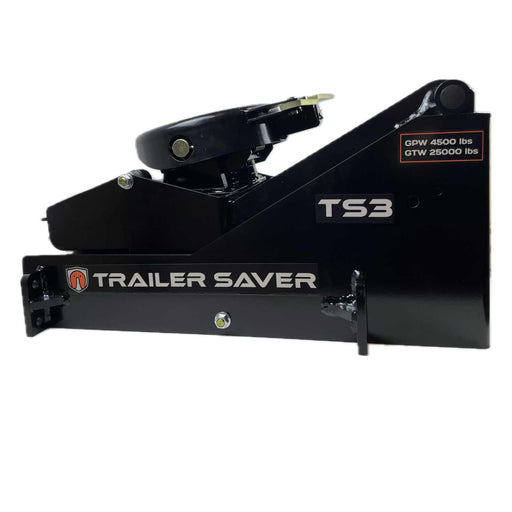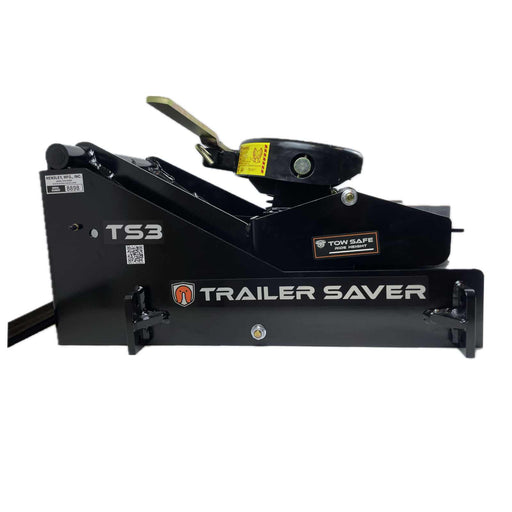Call us 800-410-6580
How Do Fifth-Wheel Hitches Work - The Ultimate Guide
How Do Fifth Wheel Hitches Work? A Complete Guide to Understanding Fifth Wheel Towing
If you're new to towing or considering a fifth wheel trailer, you may wonder, how do fifth wheel hitches work? Fifth wheel hitches are a popular choice for towing large trailers, such as RVs, horse trailers, and heavy-duty equipment haulers. In this guide, we’ll break down how fifth wheel hitches function, why they’re so effective, and what makes them a great option for heavy towing.
What is a Fifth Wheel Hitch?
A fifth wheel hitch is a specialized type of towing hitch that connects a trailer to the bed of a pickup truck. Unlike traditional ball hitches, which attach to the rear bumper, a fifth wheel hitch mounts in the truck’s bed, offering more stability and improved weight distribution. This makes it an ideal choice for hauling heavy loads.
Find your Perfect Fifth Wheel Hitch in 60 Seconds
How Does a Fifth Wheel Hitch Work?
A fifth wheel hitch operates by locking a large, U-shaped coupling pin (called the king pin) into the hitch, which is installed in the truck’s bed. Here’s a step-by-step breakdown of how it works:
1.Mounting the Hitch in the Truck Bed
The fifth wheel hitch is mounted securely to the truck’s frame, typically using rails or a factory-installed puck system. This central positioning over the rear axle helps distribute the weight of the trailer more evenly.
2.Connecting the Trailer
The trailer features a pin box with a downward-facing pin, known as the *king pin*. The king pin locks into the fifth wheel hitch’s jaws, creating a secure connection between the truck and the trailer.
3. Pivoting Action
Fifth wheel hitches are designed to allow the trailer to pivot, which is crucial for maneuvering. This pivoting action helps the truck and trailer move together smoothly, even around tight corners.
4. Towing and Weight Distribution
With the hitch mounted over the truck’s rear axle, the trailer's weight is transferred more evenly to the truck, improving stability and reducing the risk of sway. This weight distribution is a key advantage of fifth wheel hitches over traditional towing methods.
Find your Perfect Fifth Wheel Hitch in 60 Seconds
Why Are Fifth Wheel Hitches So Effective?
1.Increased Stability
Fifth wheel hitches are known for their stability, especially when compared to bumper-pull hitches. By positioning the hitch in the truck bed, the trailer is less likely to sway, making it easier to control while driving on highways or in windy conditions.
2.Higher Towing Capacity
Fifth wheel hitches generally offer much higher towing capacities than ball hitches. Some fifth wheel hitches can tow trailers weighing up to 32,000 lbs, making them ideal for heavy-duty hauling such as large RVs, construction equipment, or livestock trailers.
3.Improved Maneuverability
The pivoting design of a fifth wheel hitch makes tight turns more manageable, as the trailer is attached closer to the truck's center of gravity. This provides greater control when navigating sharp turns or backing up.
4.Comfortable Towing Experience
Many modern fifth wheel hitches, such as those offered by brands like TrailerSaver, incorporate air-ride suspension systems that absorb road shocks and vibrations. This leads to a smoother, more comfortable towing experience for both the driver and the cargo.
Types of Fifth Wheel Hitches
While all fifth wheel hitches operate on the same basic principles, there are a few different types to consider:
Fixed Fifth Wheel Hitch- This is the standard type of fifth wheel hitch, best suited for trucks with long beds. It provides a stable and straightforward towing connection.
Sliding Fifth Wheel Hitch- If you have a short-bed truck, depending on the 5th wheel model, you may require a hitch that has slide capability to make sharp maneuvers when you back up. Many newer trucks, particularly those made by Ford and GM have 6’ 9” standard beds which are longer than older models and allow for much tighter turning radius but with some combinations a slider is still required.
Air-Ride Fifth Wheel Hitch- These hitches, like the ones offered by TrailerSaver, come with an air-ride suspension system that cushions the ride, reducing wear and tear on your vehicle and cargo.
How to Use a Fifth Wheel Hitch
Using a fifth wheel hitch is simple once you understand the process:
1. Align Your Truck and Trailer: Position your truck so that the king pin on the trailer aligns with the hitch in your truck bed.
2.Lower the Trailer: Use the trailer’s jacks to lower the king pin into the fifth wheel hitch until the hitch jaws close around the pin.
3. Lock the Hitch: Ensure the hitch is locked, and double-check the connection for safety.
4.Connect the Electrical Wiring: Don’t forget to connect the trailer's electrical wiring to your truck for brake lights, turn signals, and trailer brakes
5.Test the Connection: Before hitting the road, perform a pull test by gently driving forward to ensure the trailer is securely attached.
So, how do fifth wheel hitches work? In short, they provide a stable, secure connection between your truck and trailer by mounting the hitch in the truck bed. This setup offers superior weight distribution, increased towing capacity, and improved maneuverability compared to traditional towing methods.
If you’re planning to tow a large trailer, investing in a high-quality fifth wheel hitch—especially one with advanced features like air-ride suspension from TrailerSaver—can make all the difference. With the right hitch, your towing experience will be safer, smoother, and more enjoyable.
TrailerSaver Fifth-Wheel Hitches
TrailerSaver BD5-F Air Ride 5th-wheel Hitch-Ford OEM
The BD5-F Air-Ride 5th-wheel hitch fitch factory installed Ford OEM 5th wheel prep system. Designed to complement an air ride pin box, it has 28,00...
View full detailsTrailerSaver TSLB Air-Ride 5th-Wheel Hitch
The TSLB 5th-wheel air-ride hitch is for medium to heavy-duty truck owners. Based on the same design as the TS3, it comes with a standard bolt-down...
View full detailsTrailerSaver BD5-G20 5th-wheel Air Ride Hitch-Post 2020 GM OEM
The BD5-G20 Air-Ride 5th-wheel hitch fitch is factory installed on GM OEM vehicles 2020 and newer. This air ride fifth wheel hitch has a 28,000 lb ...
View full detailsTrailerSaver BD5D Air Ride 5th-Wheel Hitch-Fits Dodge OEM
The BD5D Air-Ride fifth-wheel hitch fits the factory-installed Dodge OEM fifth-wheel Prep System. It has a 28,000-lb gross trailer weight, a 5,000-...
View full detailsTrailerSaver TS3 Air-Ride 5th-Wheel Hitch
The TS3 Air-Ride fifth-wheel hitch set the standard for 5th-wheel hitches when it was introduced over 10 years ago. And it still sets the standard....
View full details
